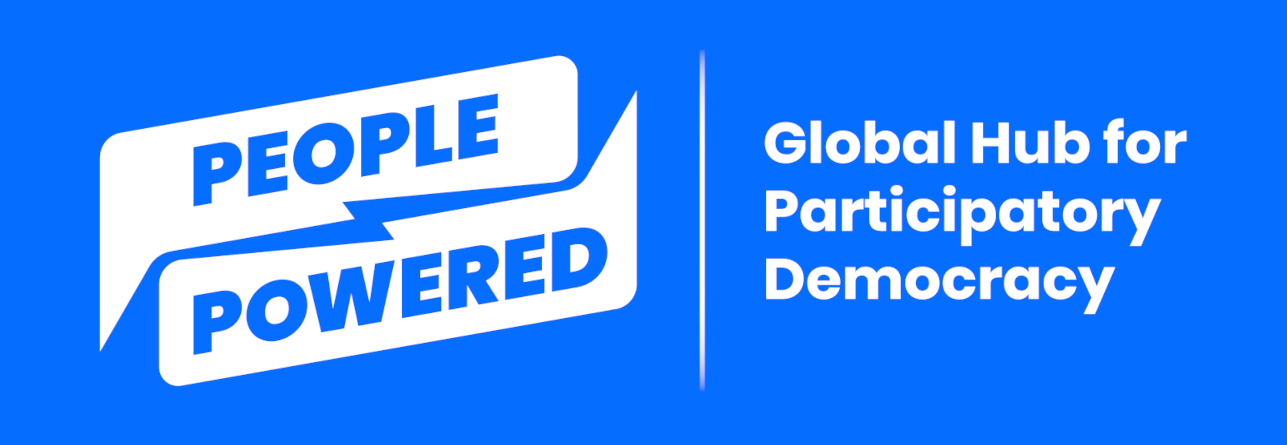Participation Playbook developers offer advice for most effective use
/The Participation Playbook, an interactive guide that walks users step by step through the planning and implementation of participatory initiatives, is now open to the public. It was four years in the making, and four expert practitioners, who served as lead authors, synthesized global knowledge in collaboration with dozens of People Powered members:
Katy Rubin, UK, legislative theater.
Rocío Annunziata, Argentina, participatory policymaking.
Silvia Cervellini, Brazil, citizens’ assemblies and juries.
Thea Crum, United States, participatory budgeting (PB).
In this interview, the senior fellows share what they learned — and how others can benefit:
What excited you the most about working on the Participation Playbook?
Thea: We know that people achieve the best outcomes when they take the time to be really deliberate about what it is they’re trying to achieve, and then plan it out. This is important because what I've seen time after time is that there's a lot of time spent thinking about whether or not to even do a participatory process — so much so that the time for planning how to do it and with whom gets really shortened. The result is that it’s rushed and isn’t done as well as it could be if there was more time to plan. Having an interactive guide that walks people through planning is a game changer.
Plus, everyone’s time is limited. They don't have time to read through 200 pages of resource materials to find something that works for their context. So, we’ve curated the top resources for them, so they don’t have to wade through tons of training courses, videos, etc.
Rocío: We had the opportunity to test the Playbook with the members of the Climate Democracy Accelerator (CDA), and I saw what Thea just talked about: Participants spent a lot of time on planning and thinking through decisions that they hadn’t anticipated. The Playbook is a very rich tool that makes you conscious and aware of the specific decisions you need to make when designing a participatory process.
Katy: I’d add that from what I’ve seen so far, the Playbook will really widen who can lead these kinds of processes. And that will have a positive impact on equity.
I would also say that, at least for the legislative theater section of the Playbook, one of the unexpected benefits of working with a steering committee of global practitioners is that we were able to weave in a lot of anecdotes and stories. These bring the many possible applications of legislative theater to life for people who usually don't have a chance to see them in person. It helps them feel like they have capacity to do this themselves, to imagine what it might look and feel like.
Silvia: I agree, and would also highlight the Playbook’s pragmatic approach. We gave a lot of thought to the questions we posed for the design stage. We wanted them to be very realistic.
One of the unique characteristics of the Playbook is that it is very much influenced and improved by users. How powerful is that, in your opinion?
Thea: That constant testing and improvement, through testing workshops and other channels, is indeed unique. It’s part of what makes the Playbook applicable to a wide variety of audiences. When I worked on the PB section, I received feedback from people in countries like Kenya and China -- all over the world and from all different kinds of contexts. That allowed us to really think about what language made the most sense. That testing really strengthened the Playbook.
Rocío: It was such a great learning process. Among researchers and thought leaders, we always talk about best practices. But when testing the Playbook in the CDA program, it was obvious that there are a lot of other experiences to which we needed to adapt. For example, one key learning for me was that we need to be open to the possibility of governments using participatory policymaking as a non-binding form of consultation. We can’t just talk about best practices, which may be unreachable for some users.
What did you find most challenging about working on the Playbook?
Katy: I found development of the Playbook both super challenging and incredibly exciting; it was challenging just to wrap my mind around what’s required to make it interactive. Thea and I were in the same meeting, when [the consultants] were talking about “wizards.” And I was like, “Wizards?! Where are the witches then?” I had to learn how to create questions that lead to more questions, for example. We had to see through a user-experience lens, which is new to a lot of us.
Another challenge was to think much broader than my own experience, in terms of coming up with options to build into the modules. With every single scenario, I had to ask myself, “Could there be other options that I don’t usually see?” The user testing really helped with that.
Still another challenge was being sure to balance the political and equity goals of participatory democracy with the need to keep the Playbook relatable to lots of different kinds of users.
Rocío: Some challenges were technical. For example, we organized the possible results by the stages in a process. But in participatory policymaking, the process can differ so much by context. In actual practice, there may be one stage or three. And the stages might be in different orders. There’s no set methodology, like with legislative theater, citizens’ assemblies and participatory budgeting. There are many ways to approach it. So, we had to include conditional questions, such as, “Will there be a deliberation stage?” and “Will there be voting?”
Silvia: Being a practitioner from the Global South, I had to challenge myself to demonstrate that citizens’ assemblies and juries are feasible and helpful at any scale, from small communities to nationwide citizen deliberation.
Thea: There was a lot of grappling with how to strike the right balance between making sure that the content is relevant and accessible for a global audience, while also providing information and resources that help contextualize it. We wanted users to see themselves in the process, to feel connected to it and to be able to apply it to their local geopolitical setting.
The feedback we received on this at times felt very contradictory. One person would say, “This is way too much information; you need to cut it down.” And then the next person would say , “I want more!” It’s all about striking the right balance, as well as understanding what factors go into making something seem less overwhelming, like the use of bullets.
In addition, there are a lot of different terms for things, and ways to define the stages. So, we did a lot of thinking about how to lead people properly through the Playbook and how to include strategically placed “signals” so users know that the information they want is coming.
Although the Participation Playbook is now public, we want to encourage users to sign up for a mentor as well. How important is that?
Katy: One thing I kept hearing and feeling when I tested it, is that the Playbook can seem overwhelming, with all the options and different scenarios. We realized that if we pair the Playbook with mentorship, it's less overwhelming, because you're being guided by an experienced person.
I sort of think there needs to be an “emotional support” warning before somebody starts using the Playbook: You don't need to have all the answers to the questions in the beginning. It’s ok to do little bits and then come back to it later.
Rocío: In my experience with my mentees, it’s good general advice to remember that the Playbook won’t provide the definitive answer. Rather, it’s a tool to make you aware of the steps you need to take. Use it as a guide.
Silvia: I think that mentorship is valuable in helping participants go further in considering alternative design options — for example, the recruitment of participants.
Katy: Similarly, one of the things I learned from a mentee is to read through the Playbook first just to see where it's going, then go back and walk through it on your own timeframe.
Thea: I agree with that. I would advise people to read it through, get a sense of the key questions and then sit with that for a little bit. Later, you can go back and start at the beginning or wherever you’re at in the process.You have to do a bit of experimentation to figure out what it's going to work in your setting to have a successful process. So, my advice is to give yourself some grace, and approach implementing a participatory democracy process from the perspective of learning as you're going and adapting and being flexible.
Who do you think can most benefit from the Playbook, on its own?
Rocío: One of the challenges is the different needs of government authorities and advocates. When a process isn’t approved yet, It's impossible to have all of the answers to the Playbook questions. When you are an advocate, there are a lot of decisions that you must make later, when you have other actors on board with more power.
Katy: I think that probably differs a little bit per process. In contrast to participatory policymaking, legislative theater is typically implemented by communities. Governments are not the No. 1 target. Yes, we need their buy in and, ideally, their investment and their accountability. But the target is also community groups.
In any case, like Rocío, I think that people who are sure they're going to be able to do a process, and who have a commitment from the various stakeholders, are more ready to use the Playbook. You've got the people, you've got the issue, you've got the problem, and now you need to know what to do.
Thea: If you have some experience doing engagement, project management and those types of things, you probably could do well with the Playbook without a mentor. If you are light on that experience, then a mentor would be really helpful to help you find some of those resources.
How would you like to see the Playbook evolve and improve in the future?
Thea: It's going to be an ever-evolving piece of work, and that was our intention. One of the beauties of the Playbook is that as users give us feedback, we can continue adding to it and updating it. However, I would like to see a section of the Playbook that is more focused on schools and youth. Because I do think that the needs and institutional context are very different.
One of the other things I'm excited about is the data and stories that can be collected through the Playbook and used to both help make the case for participatory democracy and increase access and equity.
Katy: I agree. It will be exciting to have a built-in feedback loop, in which previous users become part of the story that new users experience. In other words, users will discover how others who came before them used it and what they accomplished, and that will both inspire users and make them more confident to do a participatory process.









